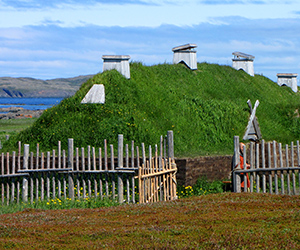CANADA HISTORY - DOCUMENTS NEWS
1995 The Legislatures of Canada Les Législatures du Canada
Analysis of the Document - (The Document follows below the Analysis)
In 1995, the publication The Legislatures of Canada (Les Législatures du Canada) provided a comprehensive overview of the legislative institutions governing Canada at both federal and provincial levels. This document was instrumental in explaining the structure, function, and responsibilities of Canadian legislatures, offering insights into how each provincial assembly and the federal Parliament operated within the framework of Canadian democracy.
Its influence extended beyond academic or political circles, serving as an essential resource for Canadians seeking to understand their governance and the workings of their representative institutions. By detailing the powers, procedures, and historical context of each legislative body, the document highlighted how Canada’s legislative framework evolved from its British roots, reflecting the country’s growth as a confederation since 1867.
One of the most significant implications of this document was its role in fostering civic education and promoting transparency in government. By providing detailed explanations of legislative procedures, the document helped demystify the often-complex process of lawmaking, ensuring that ordinary citizens could understand how decisions were made on their behalf. In an era where public participation and accountability in governance were growing concerns, The Legislatures of Canada made it easier for Canadians to engage with their political system.
Moreover, the document underscored the importance of the federal-provincial balance in Canadian politics. As Canada is a federation, power is divided between the central government and the provinces, each with its legislative assembly. The publication detailed how this balance operated within the constitution and legal frameworks, offering a crucial look at how laws were passed, how political responsibility was allocated, and how conflicts between federal and provincial powers were managed.
This document also had broader implications for understanding the role of bicameralism in Canada, particularly the function of the Senate in the federal Parliament. By comparing the operations of bicameral and unicameral legislatures across provinces, it provided insight into the unique challenges and benefits of these systems. This examination of legislative design reflected ongoing debates around Senate reform and regional representation that have long been part of Canadian political discourse.
Historically, The Legislatures of Canada was significant in consolidating decades of legislative practice, making it a vital historical record. It documented the evolution of Canada’s political institutions, reflecting key milestones such as the introduction of responsible government, the development of parliamentary democracy, and constitutional amendments that reshaped the country’s legal and political landscape, particularly post-1982 with the patriation of the Constitution and the establishment of the Charter of Rights and Freedoms.
In the context of Canadian history, this document reaffirmed the importance of legislatures as the cornerstone of representative democracy. It reminded Canadians of the sacrifices and political struggles that had forged their legislative systems, from colonial assemblies to fully sovereign legislative bodies. It also highlighted the ongoing challenges of governance in a diverse, bilingual, and multi-jurisdictional country, where the delicate balance of power between different levels of government remains central to the functioning of Canadian democracy.
Thus, The Legislatures of Canada stands as a critical document for understanding the legislative processes that have shaped Canadian history, governance, and national identity. Through its detailed account of how Canadian legislatures operate, it fostered a deeper appreciation for the complexity and importance of representative government in ensuring a functioning democracy in Canada.

Parliament of Canada / Parlement du Canada
House of Commons / Chambre des communes
Bloc Quebecois
(L'hon. Lucien Bouchard, chef de l'opposition)
(53 sieges a la chambre des communes)
Liberal Party / Parti Liberal
(Le tres hon. Jean Chretien, premier ministre)
(177 sieges a la chambre des communes)
New Democratic Party / Nouveau Parti Democratique
(Audrey McLaughlin, MP, leader)
(9 seats in the House of Commons)
Progressive Convervative Party / Parti progressiste-conservateur
(L'hon. Jean Charest, depute, chef)
(2 sieges a la chambre des communes)
Reform Party / Parti reformiste
(Preston Manning, MP, leader)
(52 seats in the House of Commons)
Independent members / Deputes independents
(2 seats / 2 sieges)
Election: 1993-10-25
Senate / Senat
Progressive Convervative Party / Parti progressiste-conservateur
(52 seats / 52 sieges)
Liberal Party / Parti Liberal
(47 seats / 47 sieges)
Independent members / Deputes independents
(3 seats / 3 sieges)
Vacancies / Sieges vides
(2 seats / 2 sieges)
Newfoundland and Labrador
House of Assembly
Liberal Party
(Hon. Clyde Wells, Premier)
(32 seats in the House of Assembly)
New Democratic Party
(1 seat in the House of Assembly)
Progressive Conservative Party
( Lynn Verge, MHA, Leader of the Opposition)
(17 seats in the House of Assembly)
Speaker (1 seat)
Independent members
(1 seat)
Nova Scotia
Legislative Assembly
Liberal Party
(Hon. John Savage, Premier)
(41 seats in the Legislative Assembly)
New Democratic Party
(John Holm, MLA, Interim Leader)
(3 seats in the Legislative Assembly)
Progressive Conservative Party
(Terence Donahoe, MLA, Leader of the Official Opposition)
(8 seats in the Legislative Assembly)
Prince Edward Island
Legislative Assembly
Liberal Party
(Hon. Catherine Callbeck, Premier)
(31 seats in Legislative Assembly)
Progressive Conservative Party
(Hon. Pat Mella, Assemblyman, Leader of the Official Opposition)
(1 seat in Legislative Assembly)
New Democratic Party
(Dr. Herb Dickieson, Leader)
(0 seats in Legislative Assembly)
Election: 1993-04
New Brunswick / Nouveau-Brunswick
Legislative Assembly / Assemblee legislative
Election: called for 1995-09-11
Confederations of Regions Party
(4 seats in the outgoing Legislative Assembly)
Liberal Party / Parti Liberal
(Frank McKenna, Premier)
(43 seats in the outgoing Legislative Assembly)
New Democratic Party / Nouveau parti democratique
(Elizabeth Weir, MLA, leader)
(3? seats in the outgoing Legislative Assembly)
Progressive Convervative Party / Parti progressiste-conservateur
(Bernard Valcourt, chef)
(6 sieges a l'Assemblee legislative ancienne)
Independent members
(2 seatss in the outgoing Provincial Parliament)
Election: called for 1995-09-11
Quebec
Assemblee nationale
Action democratique du Quebec
(Mario Dumont, MAN, chef)
(1 siege a l'Assemblee nationale)
Parti quebecois
(L'hon. Jacques Parizeau, MAN, premier ministre)
(77 sieges a l'Assemblee nationale)
Parti liberal du Quebec
(L'hon. Daniel Johnson, MAN, chef de l'opposition officielle)
(47 sieges a l'Assemblee nationale)
Election: 1994-09
Ontario
Provincial Parliament
Liberal Party
(Lyn McLeod, Leader of the Opposition)
(30 seats in new Provincial Parliament)
New Democratic Party
(Hon. Bob Rae)
(17 seats in new Provincial Parliament)
Progressive Conservative Party
(Mike Harris, MPP, Premier)
(82 seats in new Provincial Parliament)
Independent members
(1 seat in new Provincial Parliament)
Election: 1995-06-08
Manitoba
Legislative Assembly
Liberal Party
(3 seats in the new legislature)
New Democratic Party
(Gary Doer, Leader of the Official Opposition)
(19 seats in the new legislature)
Progressive Conservative Party
(Hon. Gary Filmon, Premier)
(31 seats in the new legislature)
Election: 1995-04-25
Saskatchewan
Legislative Assembly
New Democratic Party
(Hon. Roy Romanow, Premier)
Liberal Party
(Linda Haverstock, leader)
Progressive Conservative Party
(Bill Boyd, leader)
Election: 1995-06-21
Alberta
Legislative Assembly
New Democratic Party
(Ross Harvey, leader)
Progressive Conservative Party
(Hon. Ralph Klein, Premier)
Liberal Party
(Grant Mitchell, Leader of the Official Opposition)
Election: Spring 1993
British Columbia
Legislative Assembly
Liberal Party
(Gordon Campbell, Leader of the Opposition)
(14 seats in the Legislative Assembly)
New Democratic Party
(Hon. Mike Harcourt, Premier)
(50 seats in the Legislative Assembly)
Progressive Democratic Alliance
(2 seats in the Legislative Assembly)
Reform Party of British Columbia
(4 seats in the Legislative Assembly)
Social Credit Party
(1 seat in the Legislative Assembly)
Independent members
(3 seats in the Legislative Assembly)
Vacancies
(4 seats)
Election: Fall 1991
Northwest Territories / Territoires du Nord-Ouest
Legislature
The Northwest Territories Legislature is strictly non-partisan.
La legislature des Territoires du Nord-Ouest manque des partis politiques.
Yukon
Legislative Assembly
Yukon Party
(Hon. John Ostashek, Government Leader)
New Democratic Party
(Tony Penikett, MLA, Leader of the Official Opposition)
Liberal Party
There are three independent members of the Legislative Assembly.
Cite Article : www.canadahistory.com/sections/documents
Source: NAC/ANC, Elgin-Grey Papers



